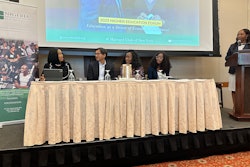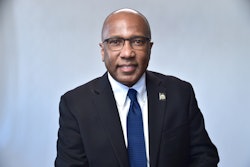Increasing higher education attainment is becoming a global goal. From the United States to the European Union to China, places around the world are setting goals for how many college and university graduates they want to have. And as the numbers of students enrolling in higher education are going up, so are the numbers who are traveling abroad for some or all of their college careers. To find out why, The Hechinger Report talked with Allan Goodman, president and CEO of the Institute of International Education, a nonprofit that administers programs designed to increase the international flow of students, including the Fulbright program.
Q: What are some of the common strategies countries are using to improve access to their higher education systems?
A: They’re communicating that they value and welcome international students. They’re better explaining the process. Every country’s process for admission is different, and in the past—and when I talk about the past it was like, 10 years ago was the dark ages and then over the past decade things have changed a lot. One of the things that’s changed is countries and institutions are better able to explain how students apply to their institutions or to their country. They’re trying to make the process, especially with respect to getting visas, much more transparent. Every country has different immigration and visa policies. Almost every destination country has had terrorism, so in the wake of terrorism they’ve begun to change their visa regulations or their visa policies. And, when you do that, you have to be really clear in explaining to international students and their families how it works.
Q. Why is making it easier for international students to come to countries such a big priority?
A. So many countries just no longer can educate all the young people who finish high school. You can’t build higher educational institutions in 18 months. It takes years, if not half a century or longer, to really develop a well-respected institution of higher education. The students are looking to be educated and there’s just not the national capacity.
Why every country that receives international students wants international students? There are probably two reasons. One is that’s the best way you make friends between your people, and, if most of your citizens can’t afford to study abroad or don’t study abroad, one of the best ways to get acquainted with the world is sitting next to a student from another country or another culture. So in America’s case—70 percent of Americans don’t have a passport even. So if it’s, as I believe it is, really important in the era of globalization for our young people to know the world, how are they going to do that if they don’t study abroad? Well, one way is to have a much more internationalized set of classmates. So that’s one big set of reasons: friendship between people, long-term relationships that emerge from them. The other reason is to try to get the best and brightest from around the world to solve problems, whether it’s cancer or global warming or solving a mathematical equation. You want to bring the best resources you have to bear on the problem and that means you have to look globally.
Q. For the countries that do have the capacity, that are trying to get foreign students to come to them but also want to send their own students abroad, how do they work to strike that balance?




















